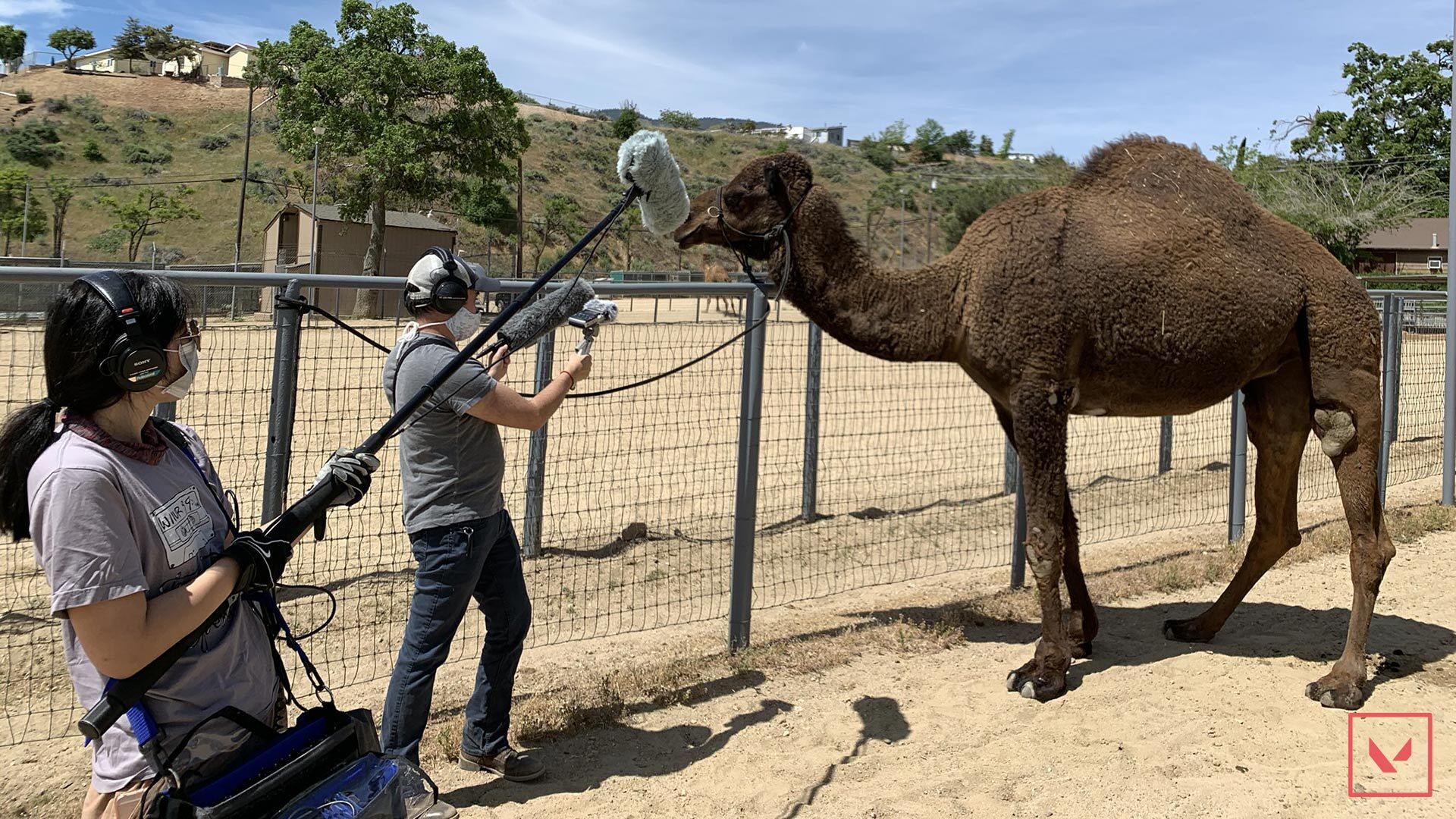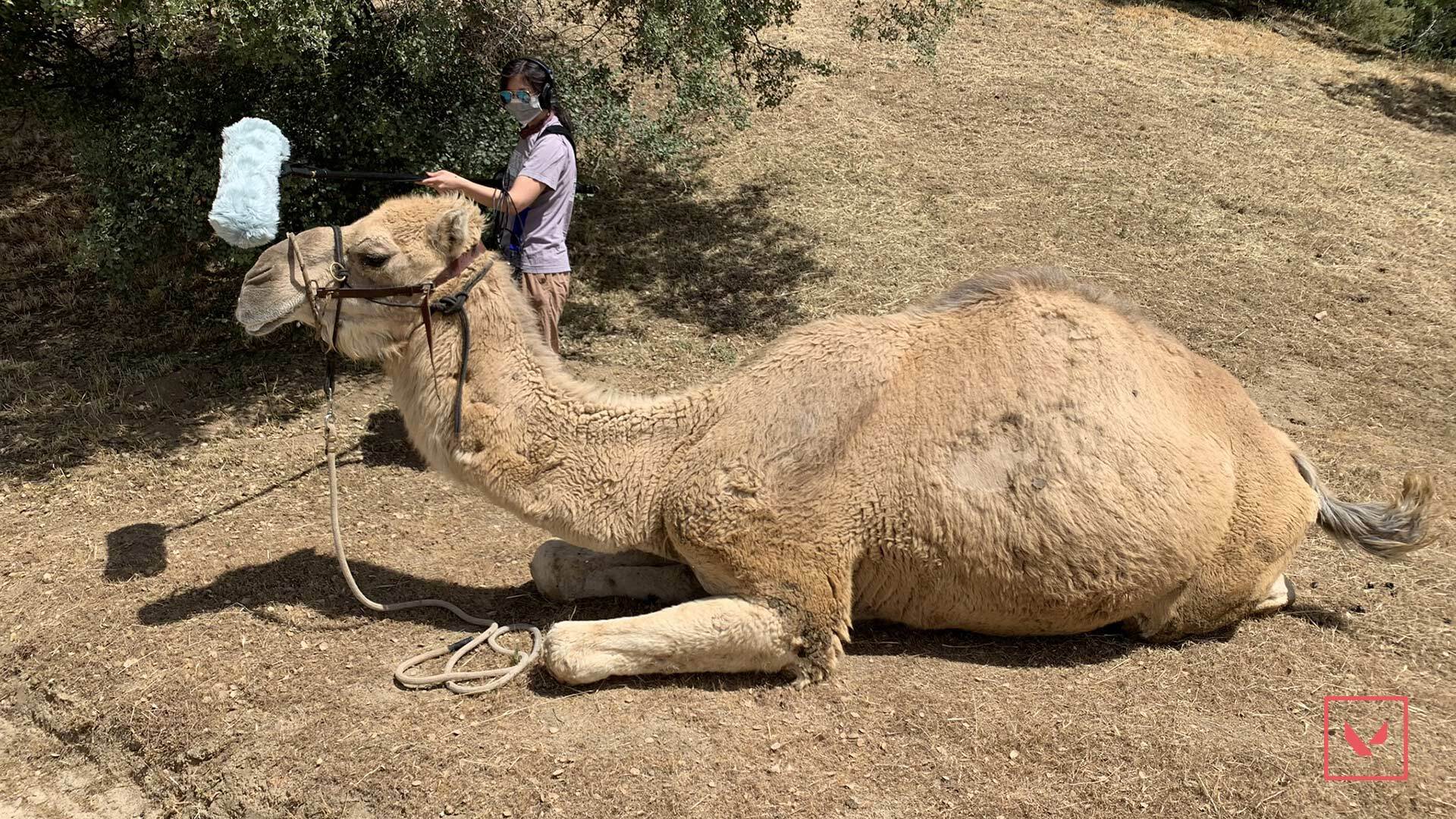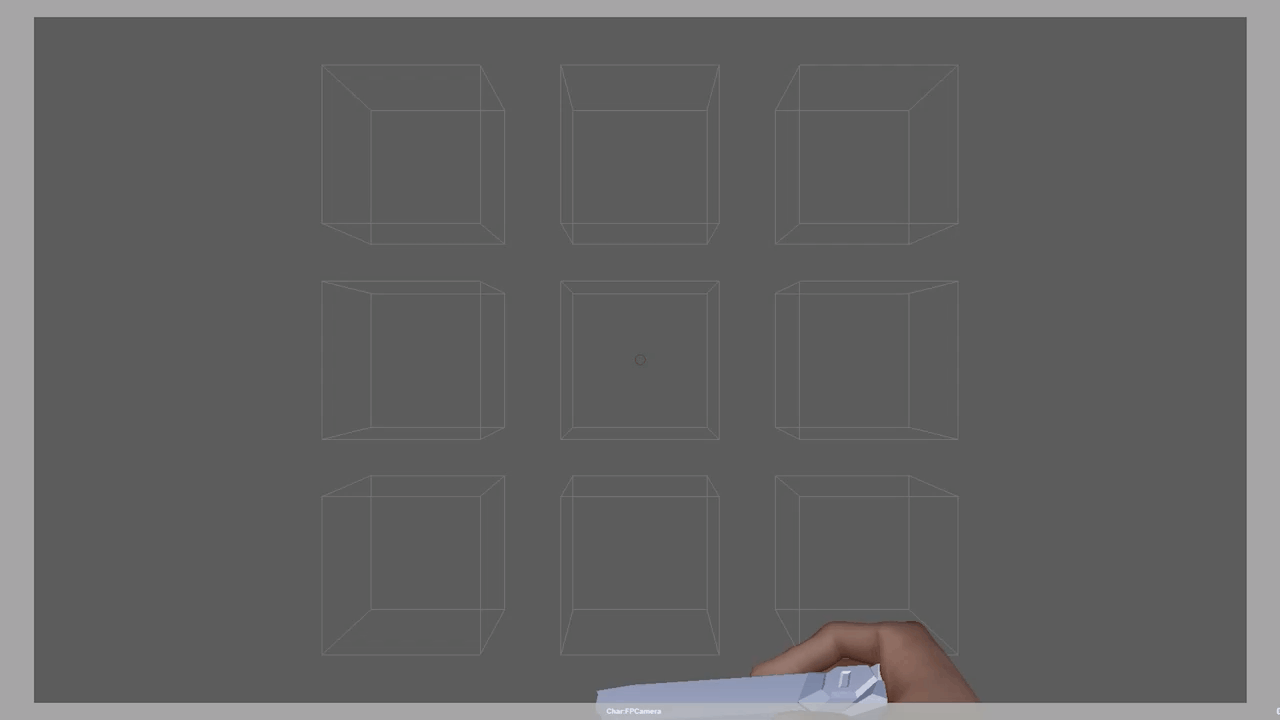Breathing life into Elderflame
Hi, VALORANT community! Preeti Khanolkar (Producer) and Sean Marino (Art Lead) are back! Last time, we talked to you about the design for the base arsenal and how our team develops skin fantasies within the bounds of competitive integrity. Today, we’re ready to delve into the details of how the Premium Content team built our most ambitious skin yet: Elderflame.
Editor’s Note: Before we named it Elderflame, the entire team called the skin line by the code name “Dragon” for over a year. You’ll see us call it Dragon throughout this article because it’s the best way to tell the Elderflame story.
Dragon is a skin line that’s been close to our hearts as far back as 2015. It’s a testament to our love of VALORANT, our dreams of what a skin in VALORANT could be even before the base weapons existed, and our aspirational barometer. For us, Dragon was precisely about its unexpectedness—no picture or concept could fully convey our vision: a living, breathing creature.
“WE’RE NOT READY TO MAKE DRAGON”
In 2018, our senior concept artist, Timur Mutsaev, designed the very first Dragon concept, then known as “Elemental Dragon.” Although it showed incredible potential and hyped the team, there was no world where we could start working on it. That is, we didn’t have a grasp of the VALORANT skins art style, or even know what the game’s skins could be. We hadn’t even finished making all of the base weapons!
When anyone asked when we’d make that badass Dragon skin, the answer was a consistent “We are not ready to make Dragon,” usually heard from Marino.
“ARE WE DOING THIS?”
By 2019, we had made our first few evolving skins and making Dragon a reality began to sound more plausible.
But before solving art and design questions (there were many), first we had to decide if we should even make it. There were some doubts on the team about whether players would even want dragon skins at all, especially given VALORANT’s more grounded tone.
In the meantime, we kicked off brainstorming for new skin ideas but Dragon still remained in the back of our minds. To no one’s surprise, Preeti snuck it onto the team’s brainstorm whiteboard and several team members voted for it.
Worldwide skin concept testing also gave us confidence that, yes, players did indeed like dragons and they wanted a dragon skin in VALORANT.
ANATOMY LESSON

Next, we had to think about the shape and anatomy of a dragon (yeah, gross) and how that would map to our weapons so they’d still be recognizable. The Vandal, Operator, and Judge were clear contenders but the pistol initially stumped us, as we realized a pistol Dragon skin would result in… anatomically challenging reload animations. We eventually made it work on the Frenzy, preserving both anatomy and decorum as you’ll see below.
Also, could we have weapon animations that made the dragon feel alive? Would it have a negative gameplay impact? And, after all those considerations and restrictions, how far could we actually push the fantasy?
With a completed concept (thanks Timur!) and strong execution idea, Preeti again asked Marino if he thought the team was ready to start creating Dragon.
He demurred, “We are not ready to make Dragon.” Here’s why:
- We needed to develop tech, which we currently lacked
- The team needed to get a few cycles of experience making other evolving skins first
- We needed to test how long it takes us to make a skin from start to finish—we didn’t want the time cost of making the skin to sacrifice our ability to make other skins
- Our artists didn’t know if they were comfortable with hitting the bar yet—we had a team that specialized in making guns, not living creatures!
In late summer 2019, Marino finally said “We are ready to make Dragon.” No one believed that he had changed his mind, but we went to work anyway.
CREATURE FEATURE
“Dragon” is kind of a loaded term that you can’t just toss around. Dragons should wield some element like fire, ice or electricity. It should draw from folklore or risk becoming just another gift shop trinket. A solid vision for Dragon meant artists would know how to execute each of their pieces and quicken overall development.
This led to a fun but heated argument at Lead Designer Trevor Romleski’s desk among roughly eight developers, where we all learned a little more about the difference between dragons, wyrms, wyverns, drakes, and other mythical beasts that some of us had wrongfully assumed were all the same thing.
Trevor told us we weren’t really making a dragon; we were making a drake. (Yeah okay, thanks Trevor). We didn’t pivot away from our idea, but it was an educational exercise nonetheless.
Through a series of questions and imagination, we established four core pillars: Dark & Brooding, Living & Breathing, Loyal, and Lethal.
Dragon’s tone would be powerful and badass. Not cute. We’ll say it again: NOT CUTE. This may sound like a trivial detail, but holding true to the “badass” vs. “cute” tone helped shape several key decisions in Dragon’s development. Our dragon is more in the realm of Game of Thrones than within the whimsy of How to Train Your Dragon.
IT’S HAPPENING!
Audio & Inspiration
August 19, 2019—we officially kicked off production on the Dragon Vandal. Oddly, it didn’t start with the usual 3D blockout model, but with sound.
Sound Designer Isaac Kikawa is a pretty low-key guy, and one day just casually shared several minutes of audio with the team. Eyes closed, with nothing to expect, the first few seconds made it clear that Isaac had given Dragon a voice: distinct, powerful and threatening. It inspired us.
Isaac explained that he mixed all sorts of sounds to create the dragon’s roars: walruses, Bengal tigers, and of course the Yellow Backed Chattering Lory, among others. He also managed to strip audio from a video of an alligator that Marino’s mother happened to record on her cell phone.
About two months before we shipped Dragon, Isaac made a few additional recordings for the Finisher, which meant befriending a very large camel.
Concept & Model
The first task of newly-hired senior concept artist Denis Lakhanov was a daunting one: the Dragon weapon concepts for the Frenzy, Operator, and Judge. His Frenzy design was when we realized that each of the dragons would have their own unique personalities, which would come to life through all of their components working together.
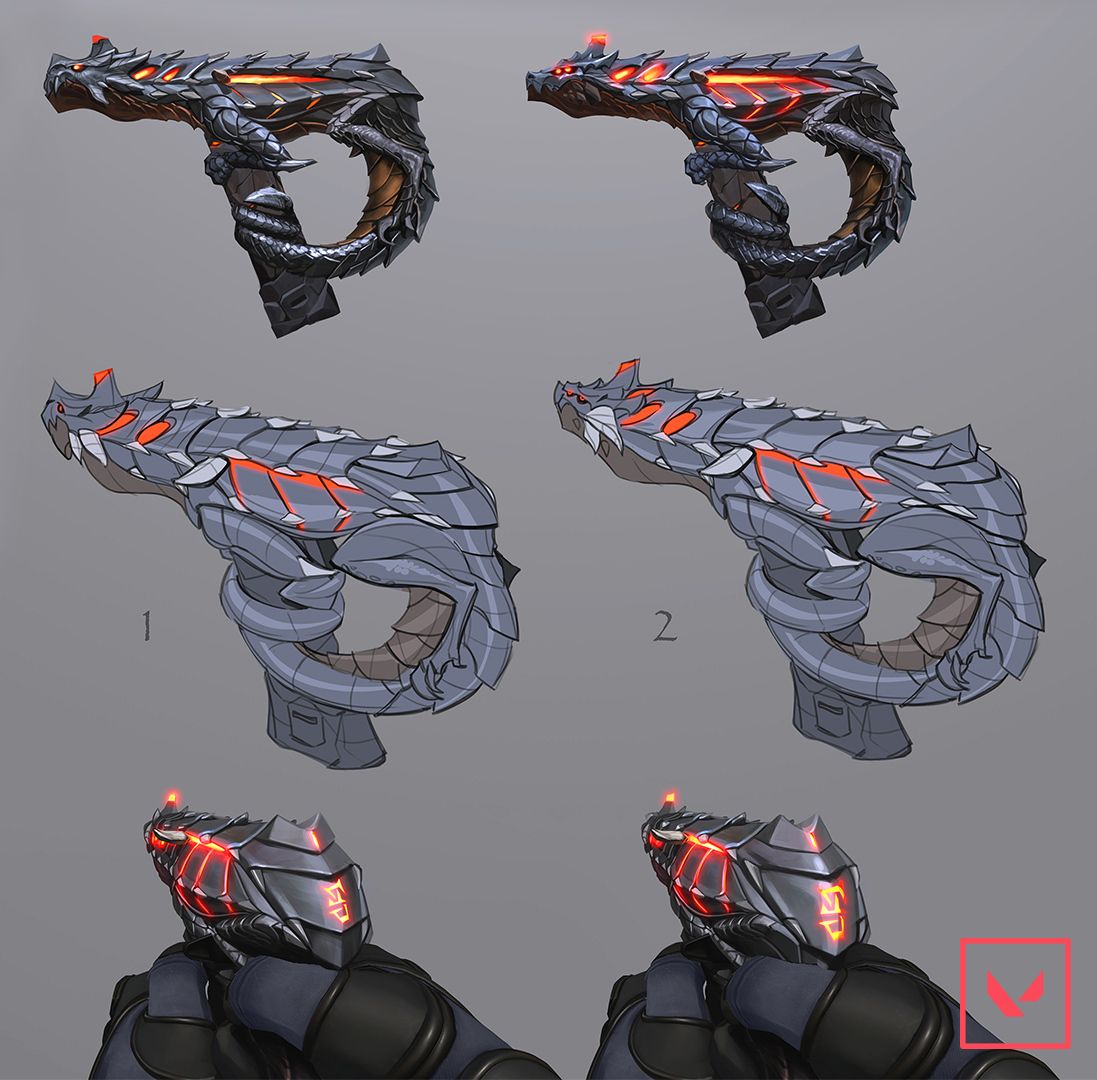
The Judge was the brute of the bunch, and all of the concepts felt like they could fit his temperament.

We had to make a scope somehow, which led Denis to explore the idea of a dragon with wings that would clasp its wings together to form the scope. Even with a solid tonal direction, the team almost latched onto the idea of a slightly derpy, loveable dragon (Item 1 below). We thought it was funny and endearing, but ultimately not fitting, so we opted for a mixture of 2 and 3.
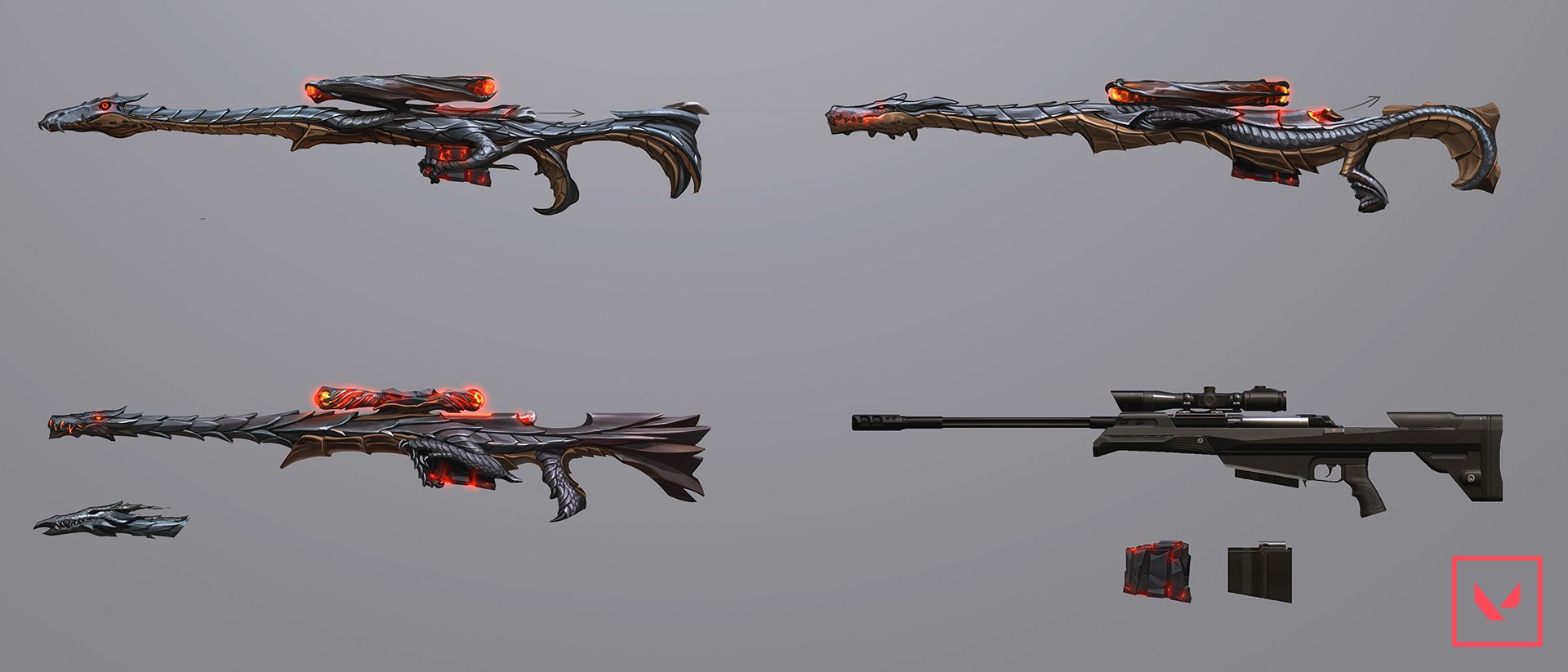
Marino started with the 3D model for the Vandal and worked closely on the design for its face to ensure it felt badass. “Not cute,” remember? The magazine was another modeling challenge to solve. Did you know it’s easy to make a magazine made of magma rock accidentally look like poo? We didn’t either.
To 3D model the rest of the dragons, Outsource Managers Hayley Chen-O’Neill and Joel Kittle enlisted support from our external partner who specializes in extremely high-quality 3D art for games. The Frenzy and Judge proved to be very challenging, but the Operator was such an unruly beast that it almost didn’t make it through development. On several occasions, we thought we had to admit to ourselves that a massive, winged Operator just would not work. But, in the end, the team made it work because they couldn’t imagine letting players down.
Animation
Senior Animator Sean McSheehan knew that animation was the most critical component when it came to gameplay, based in part on our earliest playtests with players.
The biggest point of feedback was that it was hard to tell if a gun was ready to fire when their hands didn’t directly interact with it (we had experimented with a “summon” animation for one of our prototypes). Through these player labs and design team playtests, McSheehan learned that a character’s hand motions must match the beats of the base gun’s reload. Otherwise, there’s a risk that the reload feels slower despite literally being the same speed.
McSheehan worked in lockstep with design to validate every motion and ensure that even when he pushed the assets far, it was never too far.
Animation is also where Dragon’s personalities really emerged. The first test was on the Vandal that changed from a panic clawing for the magazine to an enraged beast.

Though the idea above didn’t work for the Vandal, it was perfect inspiration for the Frenzy’s reload. As the baby of the brood, a panicky “gimme gimme” reload felt just right. McSheehan also utilized the Frenzy’s tail so it felt as if it were scurrying into the player’s hands.
For the Judge, we likened Denis’ concept design to a rhino. It’s big, brooding, and forces its way through all obstacles. He’s impatient and angry too, so he uses his mouth during the reload and crushes the magazine. This earlier animation test felt too playful, while the one that ultimately shipped better captured the Judge’s boorishness.

Given the size of the Dragon Operator, we felt the weapon carried with it an elderly wisdom. Accordingly, his movements are smooth, flowy, and dramatic. He gives a little snort when you reload him. And though he’s not aggressive like the Vandal or Judge, he’s still dangerous.
Keep an eye out for McSheehan’s subtle idle breathing animations that really give the dragons life.
VFX
Our senior VFX artist, Stefan Jevremovic, had a lot of effects to create for each of the Dragons, all within the realm of fire: smoke, embers, and flames. To give the dragons an extra menacing and lethal feel, he added idle fiery effects, which he embedded within the dragons’ bodies. As the dragons breathed, additional fire effects would ebb and flow deep within the crevices of their scales.
VFX ended up being quite critical for defining not only the Dragon melee, but VALORANT melees in general. First, back to the concept. We had Denis explore a few options for what the melee could be, ranging from a dragon claw all the way to a literal baby dragon. One baby was enough.
Also, it looked like the poor little guy was being choked and we felt weird about that.
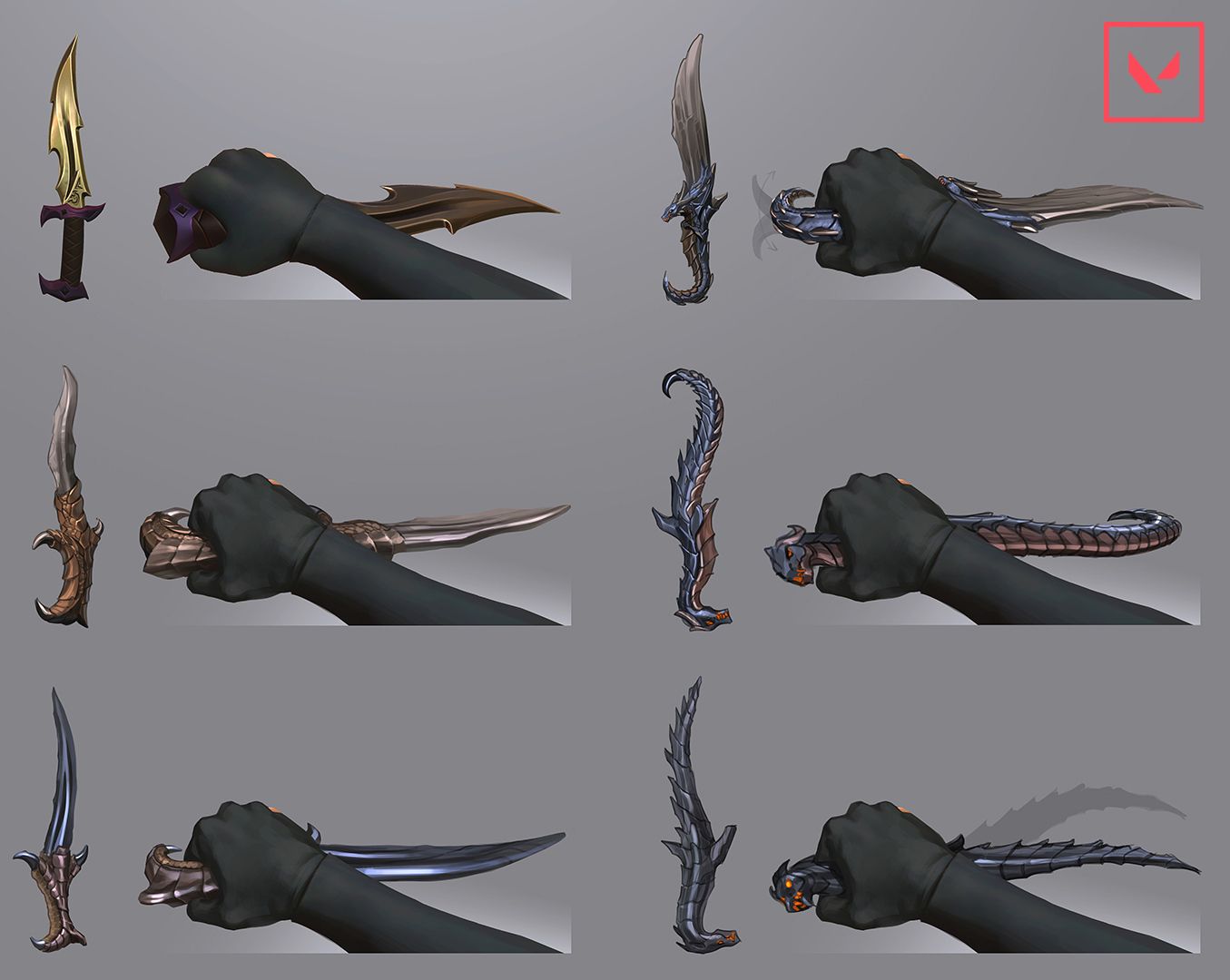
Once we’d decided that the melee wasn’t a baby dragon, we felt like it was okay to set it on fire. This was also the moment when we realized just how far we could push melees in our game compared to guns! Stefan pushed the fire effects and smoke as far as he felt he could get away with and the result was, surprisingly, very well received...well received enough that Sal Garozzo came running to us to tell us how much he loved the melee. (Sal usually doesn’t have much to say about skins, unless it negatively impacts gameplay, so when he asked “Who made that melee?” we thought we’d done something wrong.)
So, Stefan pushed the melee even further, and then went back to amp up a few other melee skins he’d added effects for in the past.
PENCILS DOWN, EXHALE
As we write this article, we’re putting the very final touches on Elderflame (we’ll stop calling it “Dragon” now): the chroma materials, the chroma VFX, and the Finisher. And the Elderflame card, which fully evokes the idea that Elderflame is a goliath, not just a tiny beast you hold in your hands.
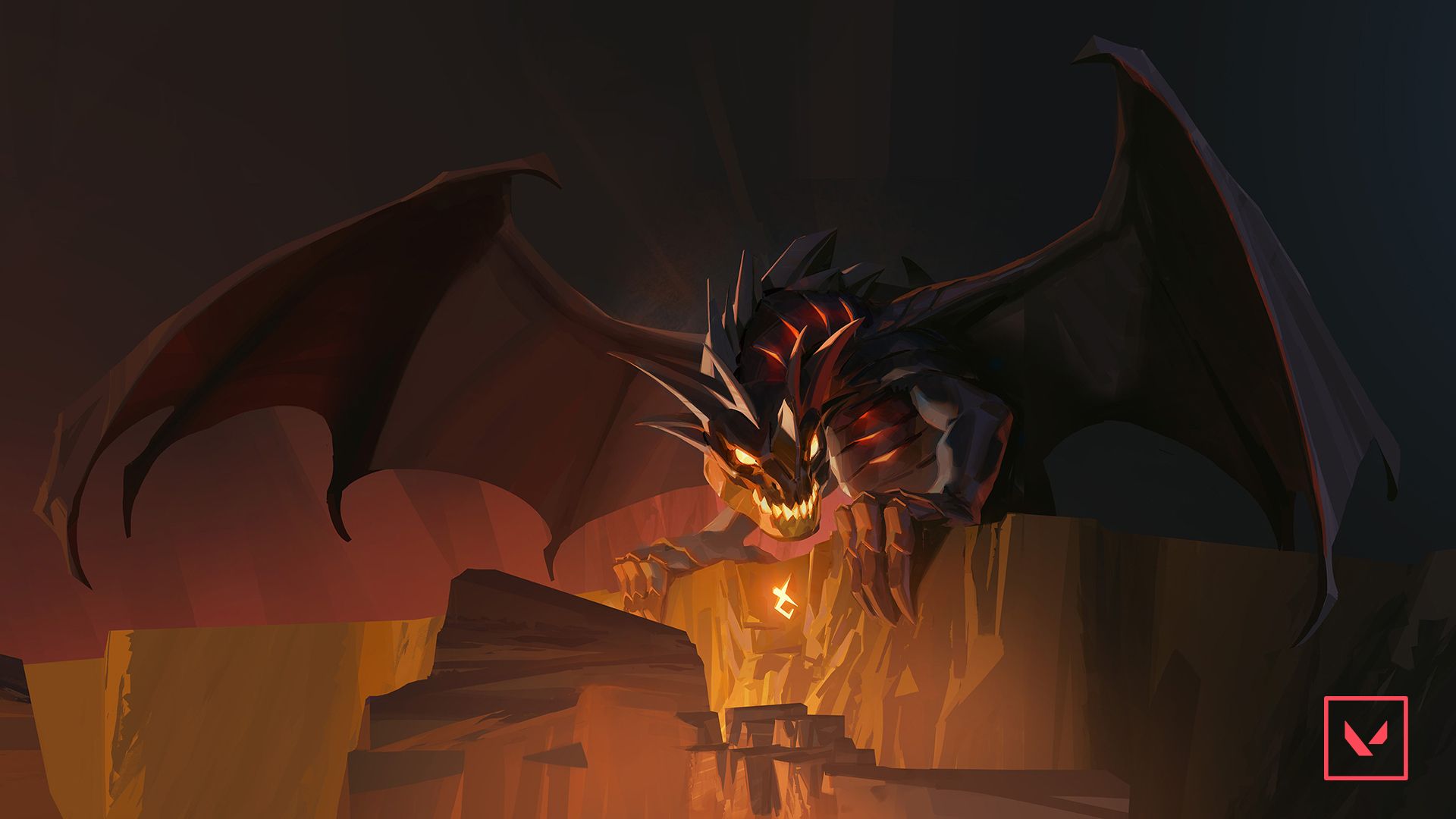
So, why the name “Elderflame”? We wanted it to feel like a dragon breed that thrives and rules the alternate fantastical world it inhabits. Even with this clear direction, naming this skin line was difficult to say the least.
Truth is, it’s indescribably hard to name something you love and have poured so much passion into—10 months of passion, to be exact—while simultaneously trying to ship a bunch of other skins and cosmetics.
Oh, and the game. We shipped the game. And it has dragons in it!
